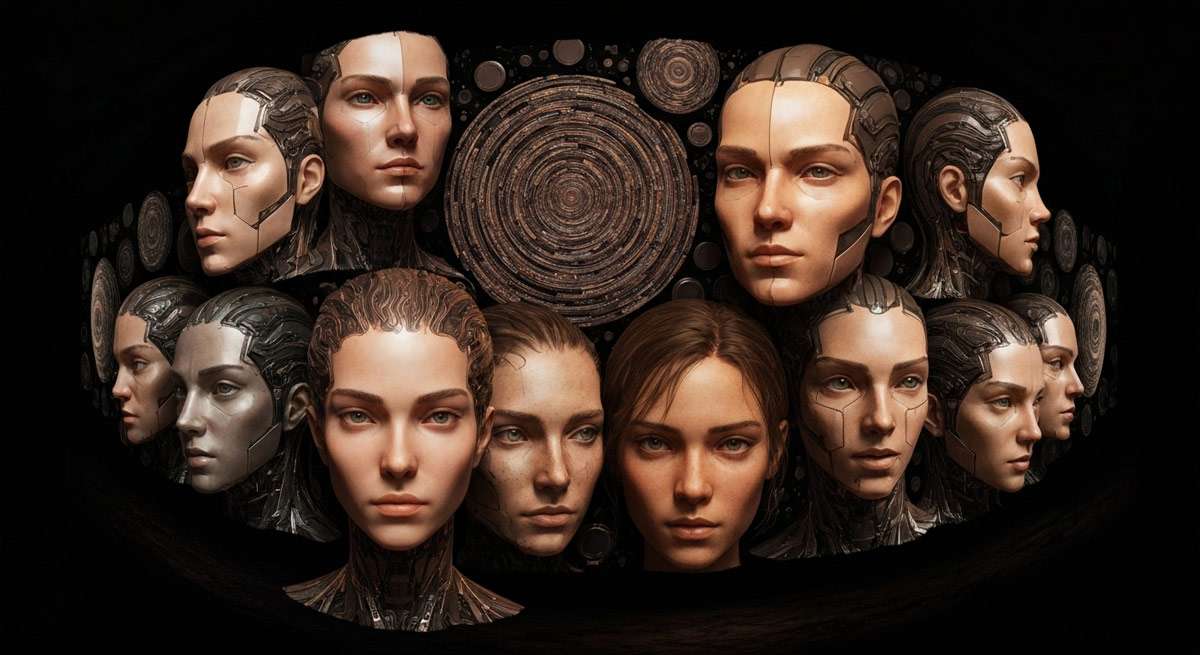Key Highlights
Here's what you need to know about AI images from deepfakes to synthetic art:
-
AI images range from malicious deepfakes to creative synthetic art.
-
Deepfakes use AI to create realistic fake videos and images of people.
-
Synthetic art represents the creative potential of AI image generation.
-
Understanding the differences helps us navigate the AI image landscape.
-
Both technologies raise important questions about authenticity and creativity.
Introduction
The world of AI-generated images spans a wide spectrum, from the concerning realm of deepfakes to the inspiring domain of synthetic art. Understanding this range is crucial for navigating our increasingly AI-driven visual landscape. While deepfakes represent the darker side of AI image generation, synthetic art showcases the creative potential and positive applications of this technology.
Understanding Deepfakes
Deepfakes are AI-generated images or videos that use deep learning algorithms to create highly realistic but fake content. The term "deepfake" combines "deep learning" and "fake," reflecting the technology's ability to create convincing forgeries. These images typically involve replacing one person's face with another's in existing photos or videos.
How Deepfakes Work
Deepfakes use generative adversarial networks (GANs) to create realistic images. The process involves training AI models on large datasets of images to learn facial features, expressions, and movements. Once trained, these models can generate new images that appear authentic but are entirely fabricated.
Concerns and Risks
Deepfakes raise serious concerns about misinformation, privacy violations, and the erosion of trust in visual media. They can be used to create fake news, impersonate individuals, or spread malicious content. The technology's increasing sophistication makes it harder to distinguish between real and fake images.
Good Read: A Look At the Dark Side Of AIExploring Synthetic Art
Synthetic art represents the creative and positive side of AI image generation. This form of art uses AI algorithms to create original, imaginative, and often beautiful images that push the boundaries of human creativity. Unlike deepfakes, synthetic art is typically created for artistic expression rather than deception.
Creative Applications
Synthetic art opens up new possibilities for artists and creators. AI can generate unique styles, combine different artistic elements, and create images that would be impossible to produce through traditional means. This technology allows artists to explore new creative territories and express their ideas in innovative ways.
Artistic Value
The artistic value of synthetic art lies in its ability to create novel visual experiences and challenge our perceptions of creativity. These images can inspire new forms of artistic expression and contribute to the evolution of visual culture.
Key Differences
Understanding the differences between deepfakes and synthetic art is essential for navigating the AI image landscape:
Purpose and Intent
Deepfakes are typically created with malicious intent, aiming to deceive or harm. Synthetic art, on the other hand, is created for creative expression and artistic exploration. The purpose behind the creation often determines the ethical implications of the technology.
Technical Approaches
While both use similar underlying AI technologies, they employ different techniques and approaches. Deepfakes focus on realistic replication of existing faces or people, while synthetic art emphasizes creative generation and artistic expression.
Ethical Considerations
The ethical considerations surrounding these technologies differ significantly. Deepfakes raise concerns about consent, privacy, and misinformation, while synthetic art raises questions about authorship, creativity, and the role of AI in artistic creation.
Detection and Identification
As AI image generation becomes more sophisticated, detecting and identifying these images becomes increasingly challenging. However, there are several methods and tools available for this purpose.
Technical Detection
Technical detection methods analyze images for signs of AI generation, such as inconsistencies in lighting, reflections, or facial features. These methods can help identify deepfakes and other AI-generated content, though they must continuously evolve to keep pace with advancing technology.
Visual Analysis
Visual analysis involves examining images for subtle signs of AI generation, such as unnatural patterns or inconsistencies. This approach requires trained observers and can be subjective, but it can be effective in identifying suspicious content.
Metadata Examination
Examining image metadata can sometimes reveal information about the creation process. However, sophisticated AI-generated images may have metadata that appears authentic, making this method less reliable.
Impact on Society
The impact of AI images on society is profound and multifaceted, affecting various aspects of our lives and culture.
Media and Information
AI images are changing how we consume and interpret media. The ability to create convincing fake images challenges our trust in visual information and requires new approaches to media literacy and verification.
Art and Culture
Synthetic art is influencing artistic culture and creative expression. It's opening up new possibilities for artists and challenging traditional notions of creativity and authorship.
Privacy and Security
Deepfakes pose significant privacy and security risks, as they can be used to create fake content involving real people without their consent. This raises important questions about consent, privacy, and the protection of individuals' rights.
Future Developments
The future of AI images is likely to see continued advancement in both technology and applications. Understanding these developments is crucial for preparing for the challenges and opportunities ahead.
Technological Advances
AI image generation technology is expected to become more sophisticated, making it harder to distinguish between real and fake images. This will require continued development of detection methods and verification techniques.
Regulatory Responses
Governments and organizations are likely to implement regulations and policies to address the challenges posed by AI images. These responses will need to balance innovation with protection against misuse.
Social Adaptation
Society will need to adapt to the presence of AI images, developing new skills and approaches to navigate this changing landscape. This includes media literacy, critical thinking, and awareness of the technology's capabilities and limitations.
See The Best AI Images Of 2025 At AiorNot.USConclusion
The world of AI images encompasses both the concerning realm of deepfakes and the inspiring domain of synthetic art. Understanding this spectrum is essential for navigating our increasingly AI-driven visual landscape. While deepfakes raise serious concerns about misinformation and privacy, synthetic art showcases the creative potential of AI technology.
As these technologies continue to evolve, it's important to stay informed about their capabilities, implications, and ethical considerations. By understanding the differences between deepfakes and synthetic art, we can better appreciate the positive applications while remaining vigilant against potential misuse.
The future of AI images will likely bring both challenges and opportunities. By staying informed and engaged with these developments, we can help shape a future where AI image generation serves positive purposes while minimizing the risks and concerns associated with malicious applications.
Good Read: Who Owns The Copyright To An Ai Image?



